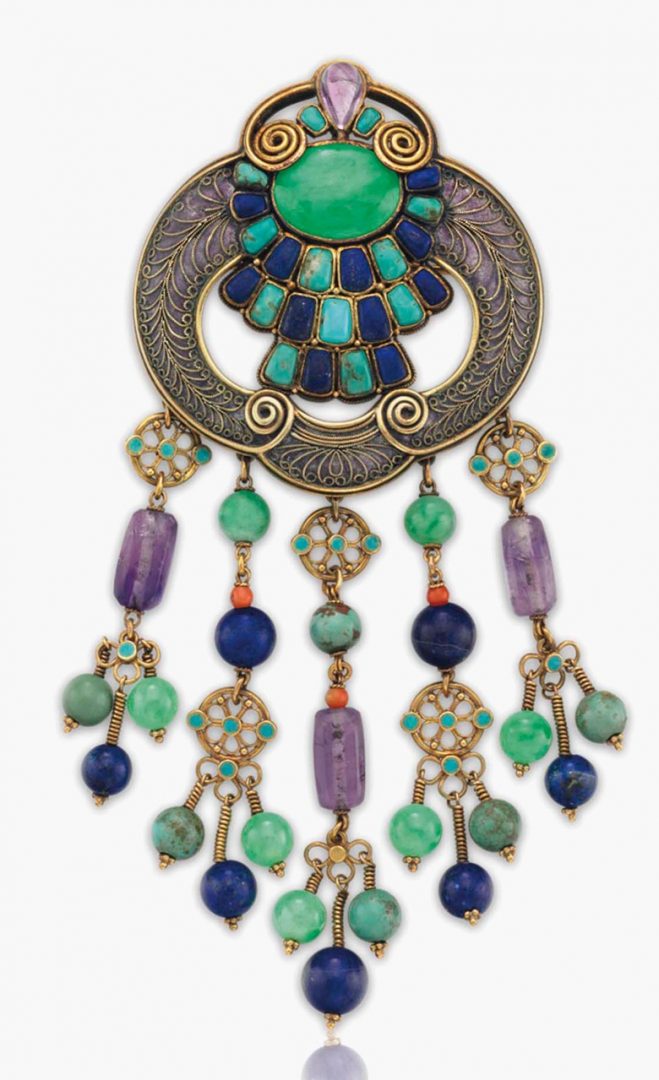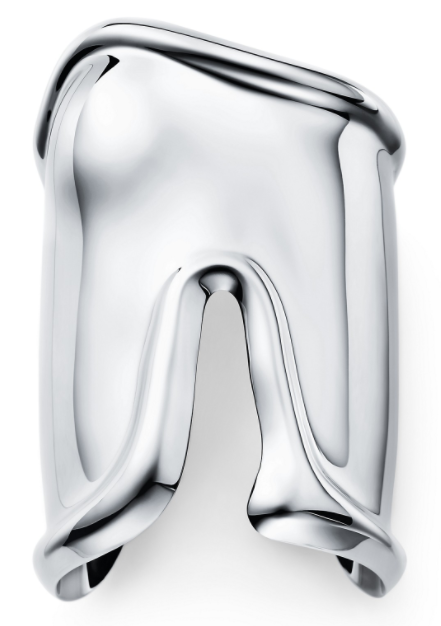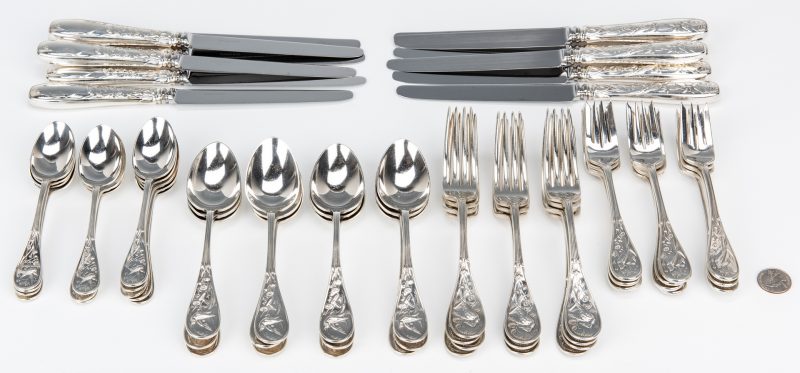Case Study: Tiffany & Company
Tiffany & Co.: A History of Design

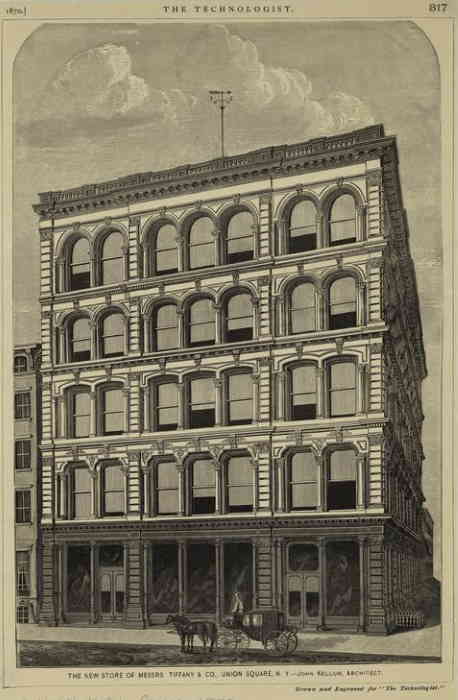 Iconic American jewelry company, Tiffany & Co., began in New York in 1837 when 25-year old Charles Lewis Tiffany and John B. Young opened a “stationery and fancy goods” store with the help of a $1000 loan from Tiffany’s father. Inspired by the simplicity and harmony of the natural world, the duo broke away from the Victorian era’s favor of opulence and moved towards the newly emerging “American style” for their wares. Their silver studio was the first American school of design and their students were encouraged to work from nature and to study the designs of studio head Edward C Moore, an acclaimed silversmith. In 1847, Tiffany & Co. introduced its first sterling silver flatware pattern and by 1870, Tiffany & Co. was firmly established as the leading purveyor of silver objects, jewels and timepieces. By the turn of the 20th century, the company had expanded their locations to London, Paris and Geneva.
Iconic American jewelry company, Tiffany & Co., began in New York in 1837 when 25-year old Charles Lewis Tiffany and John B. Young opened a “stationery and fancy goods” store with the help of a $1000 loan from Tiffany’s father. Inspired by the simplicity and harmony of the natural world, the duo broke away from the Victorian era’s favor of opulence and moved towards the newly emerging “American style” for their wares. Their silver studio was the first American school of design and their students were encouraged to work from nature and to study the designs of studio head Edward C Moore, an acclaimed silversmith. In 1847, Tiffany & Co. introduced its first sterling silver flatware pattern and by 1870, Tiffany & Co. was firmly established as the leading purveyor of silver objects, jewels and timepieces. By the turn of the 20th century, the company had expanded their locations to London, Paris and Geneva.
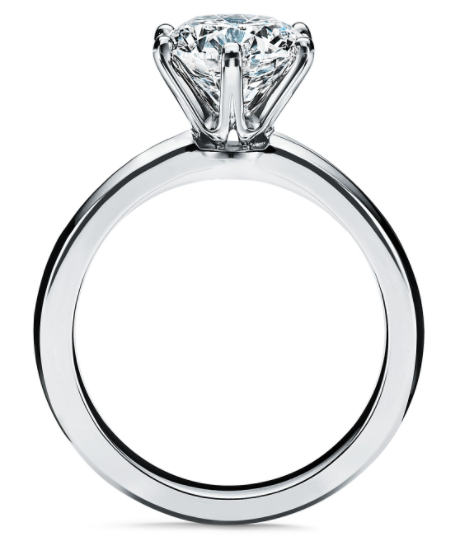 Charles Lewis Tiffany and the Engagement Ring
Charles Lewis Tiffany and the Engagement Ring
In 1886, Charles Lewis Tiffany introduced the Tiffany© Setting, forever revolutionizing the design of engagement rings. Tiffany wanted to break away from the traditional bezel-setting by lifting the stone off the band, which resulted in highlighting the brilliant-cut stone. Today, this setting has been adopted by jewelers world-wide. Tiffany’s stellar reputation and his success in acquiring high quality gemstones ultimately led to his appointment as Royal Jeweler to European royalty, as well as the Ottoman Emperor and the Czar of Russia
Louis Comfort Tiffany: Art Director
Following the death of Charles Lewis Tiffany in 1902, his son Louis Comfort Tiffany became the company’s first art director. By this time his reputation as a designer was already well established, having redecorated the White House at the request of President Chester A. Arthur in 1882. With works ranging from colorful, leaded glass lamps to vibrantly enameled jewels, Louis Comfort Tiffany’s designs favored the Art Nouveau and Arts and Crafts movements.
Partnerships
The unwavering popularity of Tiffany & Co. is due, not only to their dedication to high-quality stones and fabrication but also to their ability to adapt to the ever-fluctuating popularity of designs throughout the decades. Tiffany & Co.’s collaborations with established designers have led to iconic jewelry collections that are coveted to this day. Jewelry designer Jean Schlumberger first arrived at Tiffany & Co. in 1956, incorporating extravagantly bejeweled flowers, birds, and ocean life in his pieces. In 1974, designer Elsa Peretti joined the team, lending her pieces an air of elegant simplicity inspired by natural forms, such as her Bone series. Following Peretti in 1980, Paloma Picasso, designer, and daughter of Pablo Picasso, began her collaboration with Tiffany & Co., creating bold, colorful pieces inspired by street art. In 2006, architect Frank Gehry launched an exclusive jewelry collection that fused his expressive architectural style with combinations of precious metals, wood, and stone.
Dating Your Silver
Vintage and antique Tiffany & Co. silver pieces will carry a few clues to help you uncover the year in which it was created. Until around 1868, Tiffany & Co. purchased silver pieces from a variety of silver manufacturers, including Grosjean & Woodward, William Gale and Gorham. Items from this time period will have both the Tiffany mark  and the mark of the silversmith. After the absorption of the Moore silversmithing firm into Tiffany & Co., pieces included the initial of the last name of the Artistic Director or the President of the firm at the time of creation. For example, if you see a “T” in between a pattern number and an order number, it is possible your piece was created during the time of the directorship of Charles L. Tiffany, between 1892 and 1902. The directorship initial stamp was discontinued around 1965, however, Tiffany & Co. has recently begun re-incorporating the director’s marks with reinstituted patterns, so use caution when exercising this dating method. The level of wear on the item should help determine the true age. If the piece is bright and shiny with virtually no scratches, your item could be a recent production. Pieces with apparent tarnish, scratches or dings show more evidence of decades of use.
and the mark of the silversmith. After the absorption of the Moore silversmithing firm into Tiffany & Co., pieces included the initial of the last name of the Artistic Director or the President of the firm at the time of creation. For example, if you see a “T” in between a pattern number and an order number, it is possible your piece was created during the time of the directorship of Charles L. Tiffany, between 1892 and 1902. The directorship initial stamp was discontinued around 1965, however, Tiffany & Co. has recently begun re-incorporating the director’s marks with reinstituted patterns, so use caution when exercising this dating method. The level of wear on the item should help determine the true age. If the piece is bright and shiny with virtually no scratches, your item could be a recent production. Pieces with apparent tarnish, scratches or dings show more evidence of decades of use.
Pattern numbers can also aid in date identification. They can be anywhere between one and five digits long and are located on the underside of the item. This will signify when a design was first put into production. As some designs were used for many years, this number can only provide the earliest date, however, in conjunction with the aforementioned initials, one can narrow down the date range. Two helpful sources in dating Tiffany silver are Charles H. Carpenter and Mary Grace Carpenter’s book, Tiffany Silver and the website Online Encyclopedia of Silver Marks, Hallmarks & Makers’ Marks.
Tiffany Patterns
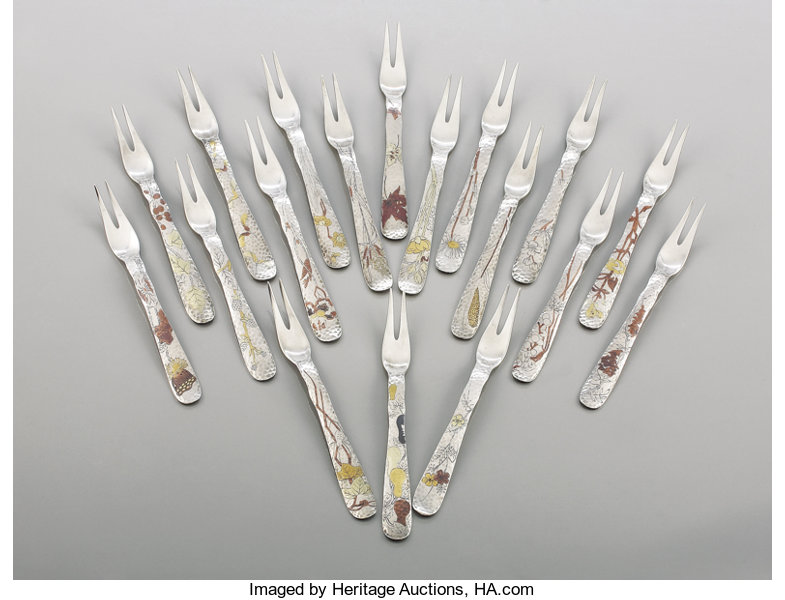 Over the years, Tiffany & Co. has produced countless flatware patterns. Designs fit for every collector range from the plain–Faneuil–to the ornate–Olympian. Though there are certainly collectors for the more modern patterns, such as Elsa Peretti’s stylish Padova line, it is the ornate patterns that garner the most attention in the secondary market. Flatware sets with decorated patterns, such as Renaissance or Chrysanthemum, generally will see $100 to even $400 a piece. Some of the most coveted pieces however, are the mixed metal examples from the late 19th century. As the flatware examples don’t often come up for auction, they frequently see the high-end of three figures to four figures per piece. A less ornamented pattern, such as Windham or Clinton will generally see around $50 a piece. Monograms are a common addition to flatware sets, particularly the older ones, so serious collectors and auction results are often not deterred by them.
Over the years, Tiffany & Co. has produced countless flatware patterns. Designs fit for every collector range from the plain–Faneuil–to the ornate–Olympian. Though there are certainly collectors for the more modern patterns, such as Elsa Peretti’s stylish Padova line, it is the ornate patterns that garner the most attention in the secondary market. Flatware sets with decorated patterns, such as Renaissance or Chrysanthemum, generally will see $100 to even $400 a piece. Some of the most coveted pieces however, are the mixed metal examples from the late 19th century. As the flatware examples don’t often come up for auction, they frequently see the high-end of three figures to four figures per piece. A less ornamented pattern, such as Windham or Clinton will generally see around $50 a piece. Monograms are a common addition to flatware sets, particularly the older ones, so serious collectors and auction results are often not deterred by them.
Here’s the Secondary Market Rundown:
– Sterling silver flatware depending on level of ornamentation will see anywhere from two to four figures per piece.
– In 2019 Case Antiques successfully sold a 59-piece flatware set in the Audubon pattern for $10,880 (buyer’s premium incl.), above its high estimate. Lot 56: Tiffany Audubon Flatware, 59 pcs
– Tabletop items from the late 19th century with Aesthetic influences and mixed metal generally see four to five figures. Other sterling silver tabletop pieces will vary based on size, level of condition and silver weight.
– Depending on the size, quantity and quality of stones, Tiffany & Co. engagement rings will generally see four to six figures.
– A bejeweled piece of jewelry by Schlumberger could see four to five figures, while an unornamented gold jewelry piece will see three to four.
– Gold jewelry by Elsa Peretti often see four figures, particularly the Bone cuffs, the Mesh necklaces and the Claw necklaces. Her sterling silver jewelry examples see two to three figures.
– Ornamented gold jewelry, particularly necklaces and the bolder earrings, by Paloma Picasso will often see four figures with a narrow potential for five. Her sterling silver and plain gold jewelry often see two to three figures.
– Gold jewelry by Frank Gehry frequently see four figures, while his unadorned sterling silver examples generally see three.
Lot 56: Tiffany Audubon Flatware, 59 pcs – sold $10,880
1. “About Tiffany & Co.,” Tiffany & Co. For The Press | About Tiffany & Co. | Tiffany & Co. History | United States, accessed July 29, 2020, http://press.tiffany.com/ViewBackgrounder.aspx?backgrounderId=33)
2. “The Tiffany & Co. Timeline,” The Tiffany & Co. Timeline | Tiffany & Co., accessed July 29, 2020, https://www.tiffany.com/world-of-tiffany/the-world-of-tiffany-timeline/)
3. “About Tiffany & Co.,” Tiffany & Co. For The Press | About Tiffany & Co. | Frank Gehry | United States|, accessed July 29, 2020, http://press.tiffany.com/ViewBackgrounder.aspx?4. backgrounderId=2)
5. Giorgio B, “TIFFANY & CO) MARKS – HALLMARKS – HISTORY,” Tiffany & Co Inc.: Sterling Silver Marks, Hallmarks, History, Dates, accessed July 29, 2020, http://www.silvercollection.it/tiffany.html)
6. Tiffany Silver Marks & Dates ~ Encyclopedia of Silver Marks, Hallmarks & Makers’ Marks, accessed July 29, 2020, https://www.925-1000.com/Tiffany_Date_Code.html)
